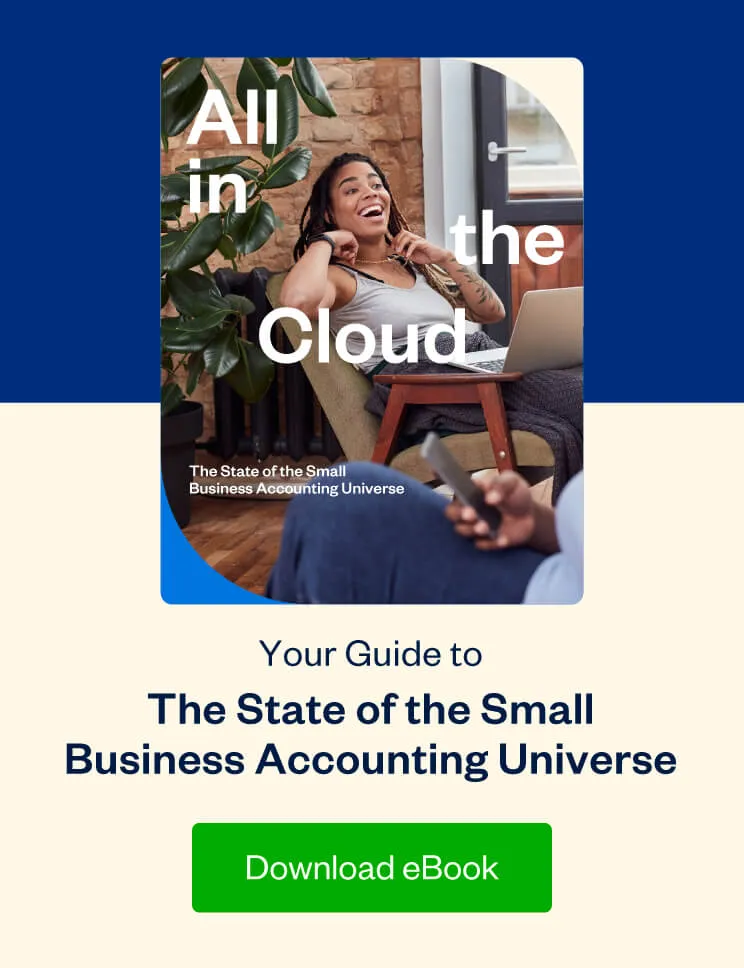If you accept online payments or receive payments through a third-party network (like Venmo, Cash App, or PayPal), here's everything you need to know about Form 1099-K.

There are a lot of tax forms to keep track of, like W-2s, 1098s, and a number of different 1099 forms, including the 1099-K.
1099 forms are informational forms that report income from sources other than wages, salaries, and tips. As a small business owner, you may get a number of these, like 1099-MISC for rent or royalties, 1099-NEC for services you’ve performed, or 1099-INT for interest earned on your bank account.
If you accepted credit card payments or received payments through a third-party network (like Venmo, Cash App, or PayPal), add another 1099 form to the list of forms you can expect to receive: A 1099-K. And you’ll want to be sure that what you receive is correct in order to avoid over- or underpaying your taxes.
Table of Contents
A Quick Note: Changes to Who Receives a 1099-K
In 2022, the IRS announced they were going to require online payment processors and credit card companies to issue 1099-K forms to business owners who process over $600 annually. Previously, this was only to owners processing over $20K and had over 200 transactions.
So some business owners may get a 1099-K form for the first time – including you. This means you need to ensure you’re keeping both income and expense records to reconcile this form when submitting taxes.
Initially, the lower threshold was supposed to apply for 2022 transactions. However, the IRS pushed this change out by a year. So, you should make sure you’re keeping records of your income and expenses for 2023 – because you may be receiving a 1099-K in next January.
What Is Form 1099-K?
Form 1099-K is a document that the IRS requires payment settlement entities (PSEs) to send to report credit card payments and third-party payment transactions. The 1099-K includes the gross amount of all payments from a PSE.
Form 1099-K was first introduced for tax years starting in 2011, but the American Rescue plan Act of 2021 made some significant changes to the rules for when third-party settlement organizations need to issue them.
The reason for this is to address a gap in tax reporting on income earned by businesses selling through online platforms (eBay, Etsy, Airbnb, Uber) and using online payment processors. Some of these online platforms also double as payment processors and in turn, are required to submit form 1099-K.
Who Receives Form 1099-K?
If you received credit card payments or third-party network transactions, you’ll likely get a 1099-K. You should receive a 1099-K on or shortly after January 31 if you received:
- Payment card transactions
- Payments in settlement of third-party payment settlement entity
Previously, you only receive a 1099-K if you had over $20,000 in sales and over 200 individual business transactions through the third-party settlement organization.
However, changed for the 2023 tax year, and anyone who generates more than $600 in total sales or services, regardless of the number of transactions will receive a 1099-K. As a result, many small businesses, sole proprietors, freelancers, and independent contractors may receive Form 1099-K for the first time.
For example, say you own an online store and received $10,000 via PayPal and $15,000 from credit card transactions. In the prior calendar year, you may not have received a 1099-K since the total from each PSE was under $20,000. However, going forward, you’ll want to keep an eye out for a 1099-K from each payment processor.
What Information Is Included on Form 1099-K?
Your Form 1099-K has a few pieces of very important information on it:
- Your tax identification number (TIN), which is either your social security number or your employer identification number
- The gross amount of payments you received from the PSE sending you the form
- Your merchant category code (MCC), is a 4-digit number used to classify your business goods or services
- The number of payment transactions processed by the payment settlement entity
- Any federal and state income tax withheld from your payment transactions
- Your contact information, including your address and phone number
What Should You Do With Form 1099-K?
Like with all tax forms, you’ll want to take the time to ensure all of the information reported is correct.
Compare the total amount of payments that they reported with your credit card records and merchant statements. Ensure the amount they are reporting matches your payment card receipt records, because this is what they’ve reported to the IRS. If you find any errors, notify the sender immediately.
You’ll also want to check that they’ve included the correct TIN and merchant category code on the form.
Once you’ve ensured that the 1099-K is accurate and you’ve reflected this amount correctly on your income tax return, keep a copy of it with your tax records.
If you’re self-employed, the income that is reflected on your 1099-K is reported on your Schedule C. Just like with your 1099-NEC, if you’ve been keeping accurate books, this business income received should already be included in your records. You won’t need to add the amount from the 1099-K to your reported income—doing so would cause you to double count your income. Just ensure it’s been properly recorded as taxable income on your income tax return.
What If the Amount on Your 1099-K Doesn’t Match Your Records?
If you receive a 1099-K and the number they’ve reported as gross payments doesn’t match your records, first ensure you’re looking at the right amounts. The 1099-K is reported in gross amounts, but your monthly statements might be reported in net amounts. Ensure you’re looking at the correct total.
If you still believe there is an error on your 1099-K, you should contact the PSE that is listed on the form. They can help you investigate the difference. Keep all of your records as documentation of the discrepancy.
One common error to watch out for is duplicate transactions. If a client pays you via credit card, they’re not supposed to also include this amount on the 1099-NEC they issue at year-end. However, some small business owners aren’t familiar with the reporting rules and issue a 1099-NEC to anyone who received payments greater than $600, regardless of the payment method used.
If a client pays you via credit card and issues a 1099-NEC for those payments, you could have twice the business income reported to the IRS on your behalf. Reach out to your client and ask them to issue a corrected Form 1099-K.
What If You Don’t Receive a 1099-K?
If you think you should have received a 1099-K but didn’t, reach out to the company that should have issued it. They may have sent it to the wrong address or have incorrect information about the reportable payment transactions you received.
Regardless of whether you receive a 1099-K or not, all income you receive should be reported on your tax return. That’s why it’s important to keep track of the taxable income you receive using an accounting solution, like FreshBooks.
How Is a 1099-K Different From a 1099-NEC?
The differences between a 1099-K and a 1099-NEC can be confusing. Both report the gross income you received.
Your 1099-NEC form will show how much you received from services, prizes and awards, rents, and other income payments.
Your 1099-K form will show how much you received from credit card payments and third-party network transactions.
The deciding factor in whether you’ll receive a 1099-NEC or a 1099-K is how you received the income. If you received money via cash, check, or an ACH deposit, you’ll likely receive a 1099-NEC. If you received the money from a third-party network (like PayPal), a credit card, or a debit card, you’ll receive a 1099-K if you meet the reporting criteria.
Payments made to you using credit cards or third-party network transactions should not be reported on your 1099-NEC, but instead on your 1099-K.
As a Business Owner Do You Need to Send a 1099-K?
In short, no, you don’t need to send a 1099-K to someone you’ve paid by credit card or third-party network. The credit card company or third-party network is responsible for sending it.
Note, if a PSE doesn’t send a 1099-K, the penalty the IRS charges them can be large. The penalties for not filing one range from $50 to a maximum of $3,532,500.
Should You Send a 1099-NEC Instead?
As a business owner, you’ll send a 1099-NEC in many situations where you pay someone more than $600. Let’s say you hire a freelancer to design a new website for you and they charged $2,500. Whether you send a 1099-NEC to them depends on how you paid them. If you sent them a check, you’ll be required to send them a 1099-NEC.
But what if you paid them using credit or debit cards?
Because you paid with a credit card, you won’t send them a 1099-NEC, even though you’ve paid them over the $600 minimum reporting threshold. And you won’t send them a 1099-K. Instead, credit card companies and third-party payment networks are required to send 1099-Ks to report the payments they received from such transactions.
Even though you made the payment, the PSE is required to send the 1099-K.
If you need help figuring out who needs to receive a 1099-NEC, you should work with a tax professional to make sure you get it right.
The Bottom Line
As a business owner, you might receive a 1099-K in your business. It’s important to know why you’re receiving this tax form and to double-check that the information matches your records. Credit card companies and third-party processors report business income to the IRS, so getting it right is important.
This post was updated in November 2023.

Written by Erica Gellerman, Freelance Contributor
Posted on April 1, 2020

 Form 1099-NEC: Your Guide to Reporting Non-Employee Compensation
Form 1099-NEC: Your Guide to Reporting Non-Employee Compensation U.S. Tax: What Is an IRS 1099-MISC Form?
U.S. Tax: What Is an IRS 1099-MISC Form? U.S. Tax 101: What Is a W9 Form?
U.S. Tax 101: What Is a W9 Form?





